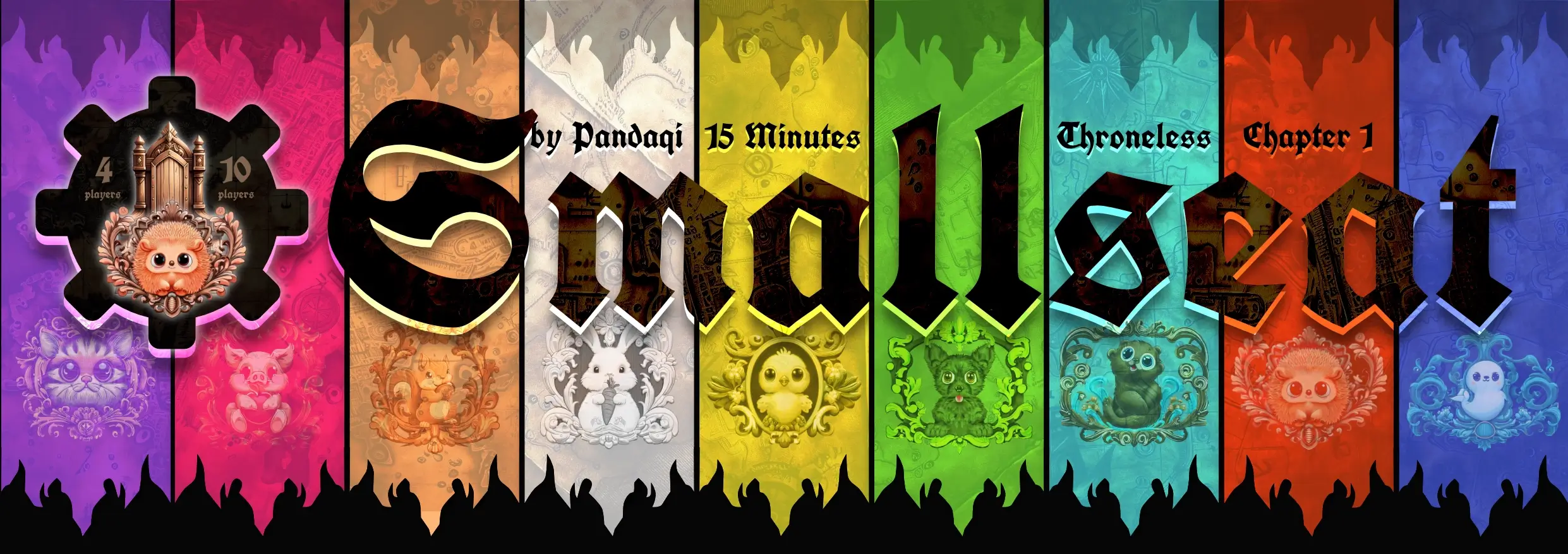Pick as many unique Animals as the number of players. Add all their cards to the deck, then shuffle.
Pick a player: they become the Teller.
- Their current position ( = where they sit/stand) is called the Smallseat.
- They publicly call out one Animal before the game starts.
- They start without cards, but will receive more and more as the game progresses.
All other players are Candidates. Deal the deck to the candidates until empty, as fairly as possible. Any remaining cards go to the Teller.
Card facing is important in this game. From now on, hand cards that face towards yourself are called secret cards. Cards that face away (to the other players) are public cards.
During the game, whoever sits at the Smallseat position is called the Boss.

The game ends once no Candidate can vote anymore.
Count the secret cards in the Teller’s hand. The animal that appears most often wins. (This can be multiple animals.)
- If this was the animal that the Teller called out at the start, they win alone!
- Otherwise, each player whose final card is the same as the winning animal, wins!

Gameplay happens in rounds, played simultaneously.
Each round,
- The Teller votes first by playing a faceup Hand card.
- Then, all Candidates who have more than 1 Hand card, pick a secret card simultaneously.
- You must play the same type as the Teller, if you can.
- You can only disobey—and play any vote you want—by giving away one card of yours. This payment is done after revealing votes.
When done, reveal all votes.
- The Animal with the most votes wins.
- Tied? The one closest to Smallseat, in clockwise direction, wins.

All votes for this winning animal go into the Teller’s hand (secret).
For each remaining card, the player gets a choice. (Do this from Smallseat again, clockwise, until all cards are gone.)
- Either execute the action on your card,
- Or swap places with another player.
Whatever happens, the card played goes into the Teller’s hand (public).
That’s it!

Below is an overview of all different Animals in the game. It’s roughly sorted based on how difficult the card’s actions are to understand.
It’s recommended to not include two Animals of similar color in the same game. They have similar actions and might make the game monotone.
The cards explain themselves, but the overview below contains clarifications or extra details.
